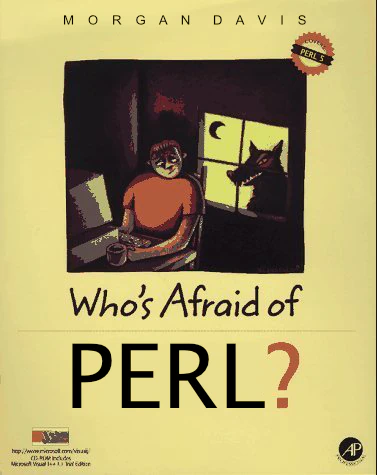In 1997, Academic Press asked me to write Who’s Afraid of Perl? as part of their series of programming books. After completing the front and back matter, chapter outline, sample chapters, and programs, my editor unexpectedly left the company. Inquiries into the fate of the book went unanswered for months. However, things were picking up at CTSnet, so I didn’t pursue the publisher about it. Oddly, this book is still listed on Amazon. (Maybe it should have been called Who’s Afraid to Publish a Perl Book?)
At the time, Perl was the backbone of the early web—powering CGI scripts, generating dynamic content, and holding countless systems together with its flexible text-processing capabilities. If you were building an interactive website back then, chances were you were writing Perl. Yet, despite its ubiquity, it had a reputation for being cryptic, even intimidating. My book aimed to demystify Perl, making it approachable for newcomers navigating the wild frontier of web development.
By the early 2000s, Perl’s dominance in web development began to fade as PHP gained traction. I, too, moved away from Perl and embraced PHP. While Perl was undeniably powerful, its syntax could be convoluted, and building web applications often required external CGI scripts, adding complexity. PHP, in contrast, was designed for the web from the start—embedded within HTML, easier to learn, and equipped with built-in database support. It ran efficiently as an Apache module, eliminating the need for separate CGI execution. This simplicity, combined with widespread hosting support, fueled PHP’s rapid adoption. Today, despite competition from newer technologies, PHP remains the backbone of the modern web, powering a vast majority of websites—including WordPress, which alone represents a significant share of the internet. Its flexibility, extensive ecosystem, and continuous updates keep it relevant.
It’s ironic that a book titled Who’s Afraid of Perl? met such an uncertain fate. In the end, the real lesson wasn’t about Perl’s complexity—it was about the unpredictability of traditional publishing on the cusp of the internet age.
